 Daily Newsletter
Daily Newsletter
October 31, 2013 - Meiosis
In mitosis, we saw nuclear division within a somatic cell . When coupled with cytokinesis, we saw that the goal was taking one parental cell and creating two genetically identical daughter cells. With meiosis, we will again experience nuclear division, but with a different goal than mitosis. The goal of meiosis is to produce gametic (reproductive) cells. As such, we will 'always' couple meiosis with cytokinesis.
Goal of Meiosis: From one diploid parental nuclei, generate four genetically unique haploid nuclei.
Goal of Meiosis-Cytokinesis: From one diploid parental cell, generate four genetically unique haploid cells.
The production of gametic cells requires two nuclear division events: a reduction division, and an equatorial division.
Important Note: All forms of nuclear division have the same basic stages. Prophase is the set-up, Prometaphase removes the nuclear envelope & attachment of mitotic spindles, Metaphase is when chromosomes align, Anaphase is when chromosome/chromatid seperate, and Telophase is when the nucleus returns to "norm".
The first meiotic divison is a reduction division, and is referred to as Meiosis I. As the term reduction implies, we are decreasing something. Specifically, during the reduction division the cell is reducing chromosomal number. REMEMBER: a diploid organism (2N) carries two of each chromosome (one maternal set, and one paternal set). During a reduction division, each set of chromosomes are separated and moved to opposite sides (poles) of the cell.
Homologous Chromosomes: This term refers to the two copies of each chromosome. For example: Chromosome 1 in humans is the largest of the chromosomes. Individuals have two copies of chromosome 1:
 one
from their mother and one from their father. These two individual
examples of chromosome 1 are considered homologous (agreeing or consistent structure). Homologous
chromosomes carry the same genes, but each homolog (one copy) will have a
unique set of alleles (one allele for each gene). Allele: individual variations in a gene produced by mutations that alters the affect of the gene product.
one
from their mother and one from their father. These two individual
examples of chromosome 1 are considered homologous (agreeing or consistent structure). Homologous
chromosomes carry the same genes, but each homolog (one copy) will have a
unique set of alleles (one allele for each gene). Allele: individual variations in a gene produced by mutations that alters the affect of the gene product.The image to the right is an example of two different homologous chromosomes. Notice that at the same gene is found at same location on each homolog (a member of a homologous pair). As shown in the first homologous pair, one homolog carries allele A for the first labelled gene, while the second homolog carries allele a (e.g., alleles are individual variations in the genetic code of a gene; this could be a simple SNP for example that changes the function of the gene product, or a more substantial variation that fails to produce a gene product).
 IMPORTANT NOTE:
Remember that what we are seeing are chomosomes. The two chromatids
of a given chromosome are the products of DNA replication. The image to
the left should help you remember that you start with a Maternal DNA
molecule and a Paternal DNA molecule. After DNA replication, these will
consense into maternal and paternal chrmosomes. It is critical that
you remember the difference between Chromosome and Chromatid.
IMPORTANT NOTE:
Remember that what we are seeing are chomosomes. The two chromatids
of a given chromosome are the products of DNA replication. The image to
the left should help you remember that you start with a Maternal DNA
molecule and a Paternal DNA molecule. After DNA replication, these will
consense into maternal and paternal chrmosomes. It is critical that
you remember the difference between Chromosome and Chromatid. Prophase 1
(prophase of Meiosis I) is the most critical stage of meiosis. Prior
to the reduction division (which occurs in Anaphase 1), a recombination
event will occur between the maternal and paternal chromosomes.
Recombination is a genetic event in which homologous genes on two homologs are swapped between the molecules. A section of
each DNA molecule is cleaved and then bound to a new molecule of DNA.
The resulting molecules will still have the same genes, but the alleles (i.e., variations)
they carried have been swapped.
Prophase 1
(prophase of Meiosis I) is the most critical stage of meiosis. Prior
to the reduction division (which occurs in Anaphase 1), a recombination
event will occur between the maternal and paternal chromosomes.
Recombination is a genetic event in which homologous genes on two homologs are swapped between the molecules. A section of
each DNA molecule is cleaved and then bound to a new molecule of DNA.
The resulting molecules will still have the same genes, but the alleles (i.e., variations)
they carried have been swapped.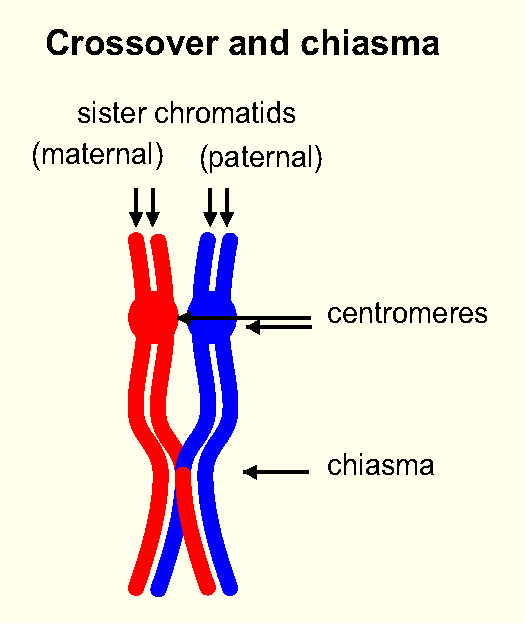 This
recombination event begins when homologous chromosomes are brought
together during prometaphase I. The homologs possess DNA
sequence similarities, and are able to bind to each other (the homologs
chemically recognize each other). Regions where Cross-Over
(recombination) can occur begin to over lap, forming a visible structure
known as a chiasma
(pl. chiasmata). During cross-over(recombination), alleles are swapped
between the two chromosomes, with the end result being genetically
unique allele patterns on each chromosome. CRITICAL POINT: the result is two unique chromosomes!
This step is critical for maintaining diversity in diploid (eukaryotic)
cell systems. Ever generation inheriets a unique genetic composite of
maternal and paternal alleles.
This
recombination event begins when homologous chromosomes are brought
together during prometaphase I. The homologs possess DNA
sequence similarities, and are able to bind to each other (the homologs
chemically recognize each other). Regions where Cross-Over
(recombination) can occur begin to over lap, forming a visible structure
known as a chiasma
(pl. chiasmata). During cross-over(recombination), alleles are swapped
between the two chromosomes, with the end result being genetically
unique allele patterns on each chromosome. CRITICAL POINT: the result is two unique chromosomes!
This step is critical for maintaining diversity in diploid (eukaryotic)
cell systems. Ever generation inheriets a unique genetic composite of
maternal and paternal alleles.This event is one of the most critical ways that eukaryotic organisms ensure the diversity of their populations. Why do you need to maintain diversity?
After this recombination event, Chromosomes will line up along the equatorial line (metaphase plate) so that there is one homolog on either side of the equatorial line. RECALL: in mitosis, chromosomes lined up so that there was a chromatid on either side of the metaphase plate; now in meiosis I, there is a homolog chromosome on either side. Why is this difference in alignment important?
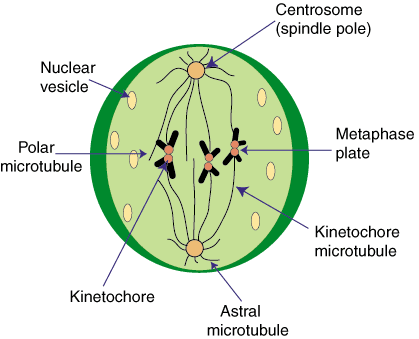 |
| Metaphase in Mitosis |
 |
| Meiosis I |
As you can see in the image of meiosis I, the alignment of chromosomes during Metaphase is critical. During anaphase I, the freshly recombined homologs are separated. The cell moves from a diploid (having 2 sets of chromosomes, 2N), to a haploid state (having only 1 set of chromosomes, 1N). This is the reduction division!
Mitosis II occurs like mitosis, which is classified as an equitorial division. In an equitorial division, the chromatids are seperated. (see the difference?)
 NOTICE: each cell produced in meiosis I now undergo meiosis II.
NOTICE: each cell produced in meiosis I now undergo meiosis II. During the reduction division (meiosis I), you went from a diploid to a haploid state. This is done by aligning the chromosomes in metaphase so that there is a homolog on either side of the metaphase plate. During anaphase, the homologs are seperated.
During the equitorial division (meiosis II), each chromosome is seperated into the individual chromatids. In metaphase II, chromosomes are aligned so that the chromatids are on either side of the metaphase plate (or to put it another way, they are alinged down the centromere). During anaphase II, the sister chromatids are then seperated.
The result: 4 genetically unique haploid cells!


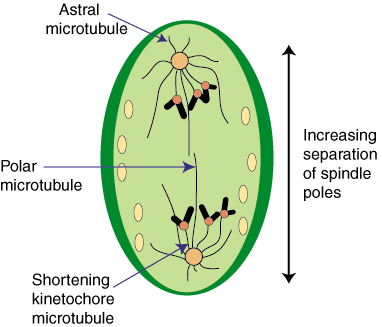 Once the chromsomes have been arranged, they can be seperated.
Once the chromsomes have been arranged, they can be seperated. 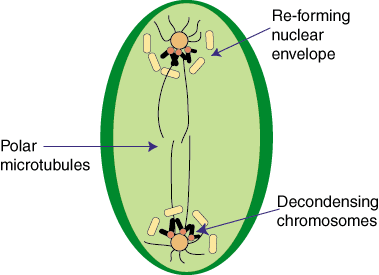
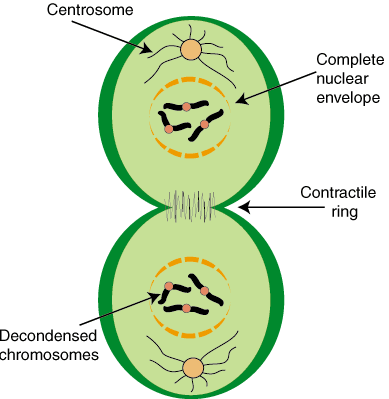

 NOTE: Plant cell walls are generally impervious to water flow. As a by-product of plant cytokinesis, and the development of the cell plate, you will find holes between the two new daughter cells. Known as plasmodesmata, these membrane lined holes allow for a continuous cytoplasm between cells. This allows for rapid movement of water and nutrients (including plant hormones) between cells (
NOTE: Plant cell walls are generally impervious to water flow. As a by-product of plant cytokinesis, and the development of the cell plate, you will find holes between the two new daughter cells. Known as plasmodesmata, these membrane lined holes allow for a continuous cytoplasm between cells. This allows for rapid movement of water and nutrients (including plant hormones) between cells (



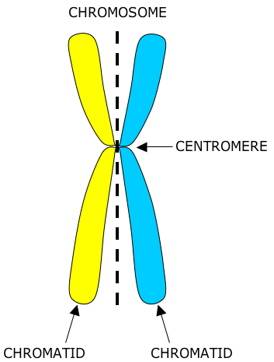
 Interphase is divided into three distinct steps: G1 Phase, S Phase, and G2 Phase.
Interphase is divided into three distinct steps: G1 Phase, S Phase, and G2 Phase.
 Throughout the cell cycle, there are time points referred to as
Throughout the cell cycle, there are time points referred to as 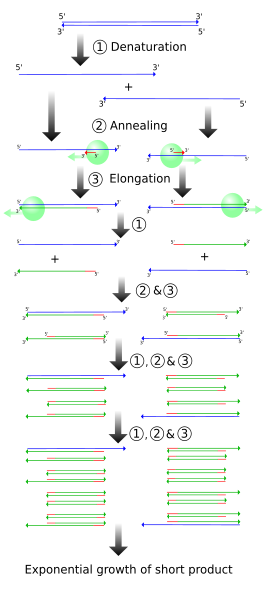




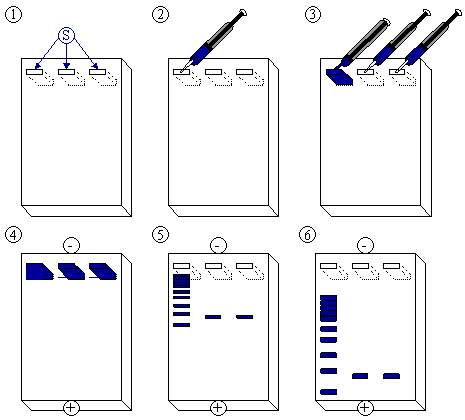

 DNA is a double stranded molecule, in which the strands are anti-parallel. This means that one strand starts at the 5' end
DNA is a double stranded molecule, in which the strands are anti-parallel. This means that one strand starts at the 5' end 
 At this point, the critical thing to remember is that DNA Polymerase will need a free 3' end on which to add a new nucleotide.
At this point, the critical thing to remember is that DNA Polymerase will need a free 3' end on which to add a new nucleotide.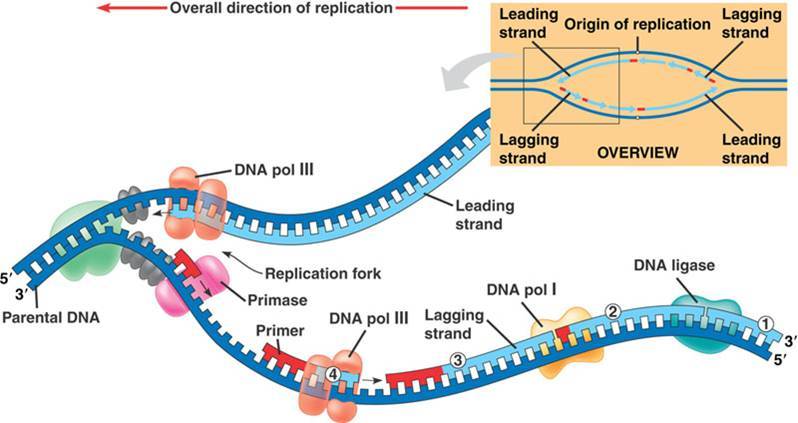 The image above shows the leading and lagging strand. Notice that the leading strand is replicating toward the
The image above shows the leading and lagging strand. Notice that the leading strand is replicating toward the 
 The system then uses a membrane component as the signal agent. The system also requires a second lipid component of the membrane known as diacylglycerol (DAG). To the right is a general schematic of the system from Wikipedia Commons.
The system then uses a membrane component as the signal agent. The system also requires a second lipid component of the membrane known as diacylglycerol (DAG). To the right is a general schematic of the system from Wikipedia Commons.
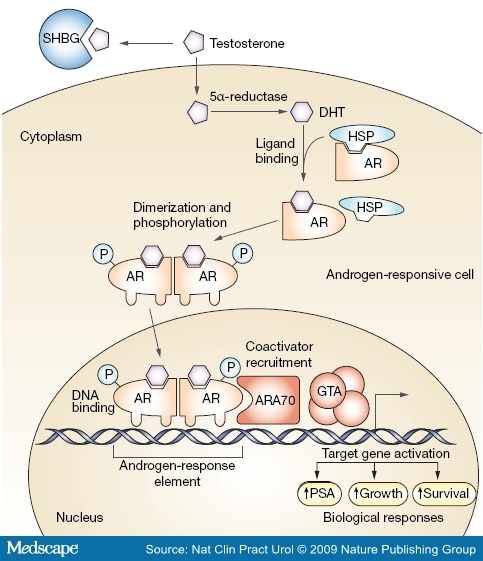
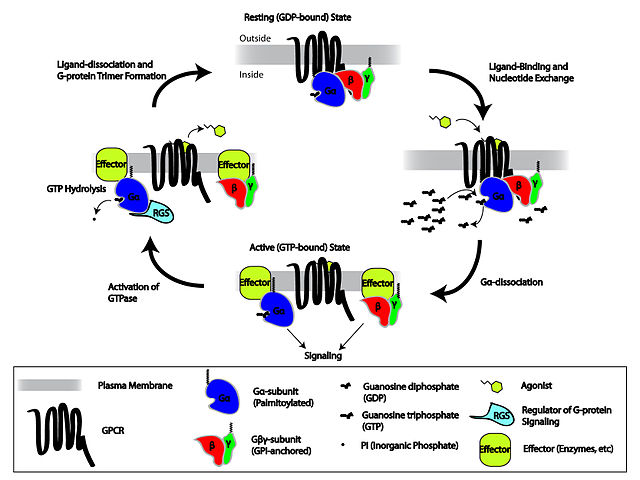
 e Cyclase. This enzyme takes ATP (Adenosine Triphosphate) and removes two phosphates. The remaining phosphate binds back to the ribose sugar at the 3' carbon, creating a ring structure (cycle) between carbon 5' and 3'. This is known as cyclic AMP (cAMP). cAMP is a very common secondary messanger. It can be produced in bulk and can bind to a variety of enzymes.
e Cyclase. This enzyme takes ATP (Adenosine Triphosphate) and removes two phosphates. The remaining phosphate binds back to the ribose sugar at the 3' carbon, creating a ring structure (cycle) between carbon 5' and 3'. This is known as cyclic AMP (cAMP). cAMP is a very common secondary messanger. It can be produced in bulk and can bind to a variety of enzymes.

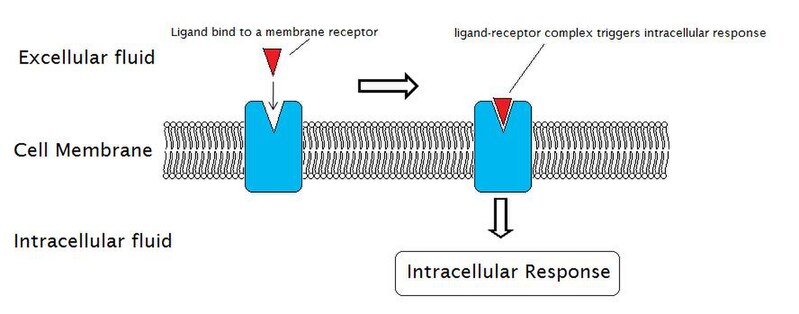
![Bensaccount at en.wikipedia, Author. “[Mu-opioid receptor (GPCR).png]” Wikimedia Commons. http://upload.wikimedia.org/wikipedia/commons/thumb/6/6e/Mu-opioid_receptor_%28GPCR%29.png/227px-Mu-opioid_receptor_%28GPCR%29.png (accessed September 19, 2012) μ-Opioid Receptor](http://upload.wikimedia.org/wikipedia/commons/thumb/6/6e/Mu-opioid_receptor_%28GPCR%29.png/227px-Mu-opioid_receptor_%28GPCR%29.png)
![Bensaccount at en.wikipedia, Author. “[Mu-opioid receptor.png]” Wikimedia Commons. http://upload.wikimedia.org/wikipedia/commons/thumb/b/b6/Mu-opioid_receptor.png/177px-Mu-opioid_receptor.png (accessed September 19, 2012) Active and inactive μ-opioid receptors.](http://upload.wikimedia.org/wikipedia/commons/thumb/b/b6/Mu-opioid_receptor.png/177px-Mu-opioid_receptor.png)
